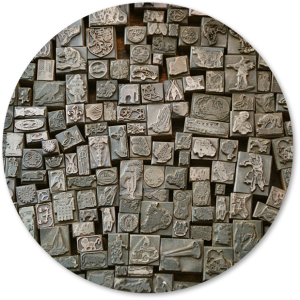Audit & Compliance for Automation Platforms

Infograph: Automation - Audit & Compliance
This post is part of the "Automation-Orchestration" architecture series. Posts of this series together comprise a whitepaper on Automation and Orchestration for Innovative IT-aaS Architectures.
Audit and Compliance has assumed greater importance in recent years. Following the Global Financial Crisis of 2007-08 – one of the most treacherous crises of our industrial age (Wikipedia cross-references various sources to the matter) – audit and standardization organizations as well as governmental institutions invested heavily into strengthening compliance laws, regulations, and enforcement.
This required enterprises in all industries to make significant investments to comply with these new regulations. Standards have evolved that define necessary policies and controls to be applied as well as requirements and procedures to audit, check, and enhance processes.
Typically, these policies encompass both business and IT related activities such as authentication, authorization, and access to systems. Emphasis is placed on tracking modifications to any IT systems or components through use of timestamps and other verification methods – particular focused on processes and communications that involve financial transactions.
Therefore, supporting the enforcement and reporting of these requirements, policies and regulations must be a core function of the automation solution. Following are the key factors to consider when it comes to automation and its impact on audit and compliance.
Traceability
The most important feature of an automation solution to meet compliance standards is traceability. The solution must allow for logging capabilities that tracks user activity within the system. It must provide tracking of all modifications to the system’s repository and include the user’s name, date and time of the change, and a copy of the data before and after the change was made. Such a feature ensures system integrity and compliance with regulatory statutes.
Statistics
Statistical records are a feature that ensures recording of any step performed either by an actual user or one initiated by an external interface (API). Such records should be stored in a hierarchy within the system’s backend database allowing follow up checking as to who performed what action at what specific time. Additionally, the system should allow for comments on single or multiple statistical records, thereby supporting complete traceability of automation activities by documenting additional operator actions.
Version Management
Some automation solutions offer the option of integrated version management. Once enabled, the solution keeps track of all changes made to tasks and blueprint definitions as well as to objects like calendars, time zones etc. Every change creates a new version of the specific object which can be accessible at any time for follow up investigation. Objects include additional information like version numbers, change dates and user identification. In some cases, the system allows for restoring an older version of the specific objects.
Monitoring
All of the above handle, process and record design-time activity of an automation system, ensuring stored data and data changes are documented to comply with audit needs. During execution, an automation system should also be able to monitor the behavior of every instantiated blueprint. Monitoring records need to track the instance itself as well as every input/output, changes performed to or by this instance (e.g. putting a certain task on hold manually).
Full Audit Trails
All of the above features contribute to a complete audit trail that complies with the reporting requirements as defined by the various standards. Ultimately an automation system must be able to easily produce an audit trail of all system activity from the central database in order to document specific actions being investigated by the auditor. An additional level of security that also enables compliance with law and regulations is the system’s ability to restrict access to this data on a user/group basis.
Compliance Through Standardization
Finally, to ease compliance adherence, the automation solution must follow common industry standards. While proprietary approaches within a system’s architecture are applicable and necessary (e.g. scripting language – see chapter “Dynamic Processing Control”), the automation solution itself must strictly follow encryption methods, communication protocols, and authentication technologies that are widely considered as common industry best practice. Any other approach in these areas would significantly complicate the efforts of IT Operations to prove compliance with audit and regulatory standards. In certain cases, it could even increase the audit cycle to less than a year depending on the financial and IT control standard being followed.





1 thought on “Audit & Compliance for Automation Platforms”